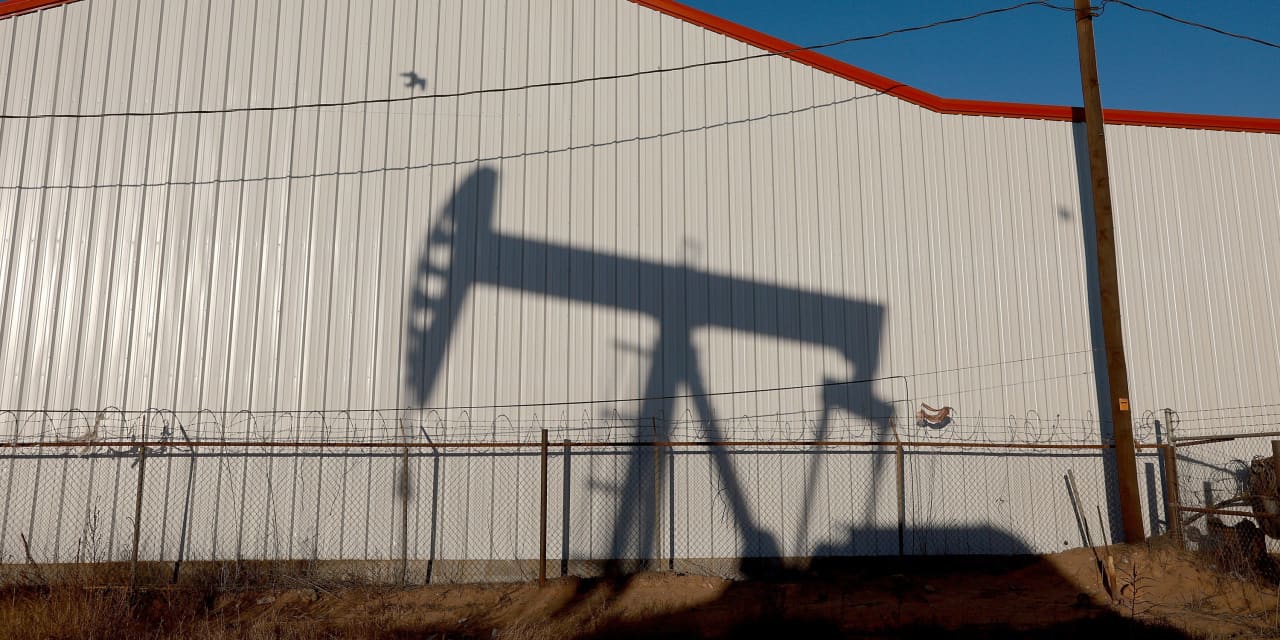Oil futures declined on Thursday, with worries about energy demand and a sharp rise in U.S. crude inventories over the past two weeks prompting prices to trade at their lowest levels since July.
Price action
-
West Texas Intermediate crude
CL00,
-5.49%
for December delivery
CL.1,
-5.49% CLZ23,
-5.49%
fell $2.69, or 3.5%, to $73.97 a barrel on the New York Mercantile Exchange. -
January Brent crude
BRN00,
-5.24% BRNF24,
-5.24% ,
the global benchmark, was down $2.32, or 2.9%, at $78.86 a barrel on ICE Futures Europe. Based on the front-month contracts, Brent and WTI crude were both poised for the lowest settlements since July. -
December gasoline
RBZ23,
-4.92%
lost 3.4% to $2.1268 a gallon, while December heating oil
HOZ23,
-4.41%
shed 3% to $2.7818 a gallon. -
Natural gas for December delivery
NGZ23,
-4.42%
traded at $3.087 per million British thermal units, down 3.2%.
Market drivers
“Although the recent builds in U.S. [crude] inventories aren’t helping matters, the decline in crude-oil prices appears to be driven by concerns about falling demand,” Colin Cieszynski, chief market strategist at SIA Wealth Management, told MarketWatch.
WTI crude prices on Thursday started to “really slide about the time that the poor U.S. industrial-production report came out — a sign of a potentially softening economy that could impact energy demand,” he said.
Industrial production fell 0.6% in October, the Federal Reserve reported Thursday. Economists surveyed by the Wall Street Journal expected a decline of 0.4%.
The National Association of Home Builders monthly confidence index, also released Thursday, showed a decline of 6 points to 34 in November. Cieszynski referred to the reading as “terrible” and said it “adds to the case of softening economy.”
Meanwhile, the Energy Information Administration on Wednesday released two weeks of U.S. petroleum-supply data, after having delayed last week’s numbers due to planned system updates.
Read: Why the U.S. government is changing the way it collects data on the oil market
The government agency reported that U.S. commercial crude inventories rose by 3.6 million barrels for the week ending Nov. 10 to total 439.4 million barrels. The data showed inventories rose 13.9 million barrels in the week ending Nov. 3, for a two-week rise of 17.5 million barrels.
At 439.4 million barrels, crude stocks are below the five-year average but are trending back toward more typical levels for this time of year, ING commodity analysts Warren Patterson and Ewa Manthey noted.
In terms of oil demand, “it also appears that seasonal factors may be playing a role,” SIA Wealth’s Cieszynski said. “Crude oil has dropped off along with gasoline following the end of summer driving and air-travel season, while natural gas has been stable lately,” relatively outperforming oil with the winter home-heating season approaching, he said.
In a report Thursday, the EIA said U.S. natural-gas supplies in storage rose by 60 billion cubic feet for the week ending Nov. 10. It also said supplies declined by 6 billion cubic feet for the week ending Nov. 3.
On average, analysts surveyed by S&P Global Commodity Insights forecast an increase of 32 billion cubic feet for the two-week period ending Nov. 10.
Meanwhile, Amos Hochstein, a White House energy adviser, told Bloomberg on Wednesday that the U.S. would enforce sanctions against Iran and that the country’s crude exports “will come down.” Lax enforcement of the sanctions has been seen as allowing Iranian crude exports to grow.
Stricter enforcement of sanctions could take 500,000 to 1 million barrels a day of crude off the market, Patterson and Manthey said, “enough to tighten up the global oil balance significantly through 2024.”
The decline would be partly offset by a marginal rise in Venezuelan supplies after the U.S. eased sanctions on that country, as well as by the potential restart of Kurdish oil flows that could bring around 500,000 barrels a day back onto the market, the analysts said.
Read the full article here













